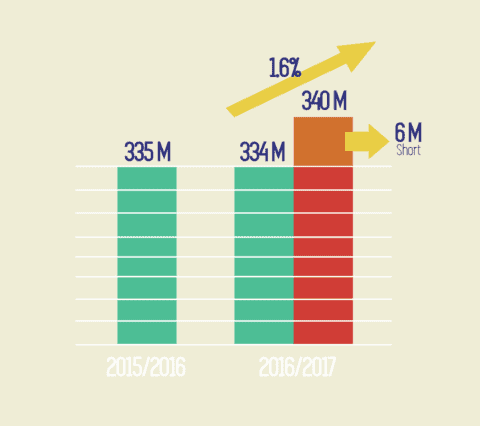After the June 1 release of the 2016-17 provincial budget, word about funding cuts for post-secondary institutions traveled quickly, but many at the University of Saskatchewan have been left wondering, what exactly will these cuts mean for students?
In the budget, the provincial government predicts a $434 million deficit for the coming year, up from 2015-16’s $427 million. The U of S, relying on provincial funding for 67 per cent of its operating budget, will receive $334.352 million this year, compared to last year’s $335.271 million — in other words, a zero per cent increase.
Greg Fowler, U of S vice-president finance and resources, explains the discrepancy between the grants from year to year.
“The change of about $920,000 is due mostly to the split between the [University of Regina] and U of S based on the Saskatchewan Universities Funding [Mechanism]. Each year the model is run based on enrollment, research and staffing data. This year there was a slight shift to the U of R. Other years it has shifted towards U of S. Basically, overall it has remained quite steady when averaged over a number of years,” Fowler said, in an email to the Sheaf.
based on enrollment, research and staffing data. This year there was a slight shift to the U of R. Other years it has shifted towards U of S. Basically, overall it has remained quite steady when averaged over a number of years,” Fowler said, in an email to the Sheaf.
In addition to the smaller operating grant, targeted grant funding for the Health Sciences Building, which received $7.9 million last year, and for the position of Canada Excellence Research Chair in Water Security has been deferred for re-examination in the coming year.
Emmanauel Barker, U of S Students’ Union vice-president operations and finance, expresses his concerns about the budget.
“In light of the fact that [inflation] rates increase at about 1.6 [per cent] and that the university grows, a stagnant budget for the university has impact across the board let alone just on specific issues,” Barker said. “Any cut in the university in any place requires a re-ordering of budget, which negatively impacts students because it has potential to reduce the services.”
The government would need to give the U of S about $340 million in order to adjust for inflation rates, while the current grant of $334 million leaves the university about $6 million short of that mark.
While it is still too early to discern definite long-term effects of the budget cuts on students, Barker believes that nothing good will come of them.
“At this point, everything is speculation, but the immediate guess is that tuition would continue to increase, that services could decline … Neither of those things need to happen, but those are probably the major impacts for students,” Barker said.
In 2015-16, tuition rates rose at an average of 2.4 per cent. However, Fowler is adamant that, though long-term changes are difficult to foresee, the university executive anticipated provincial funding cuts and planned their budget accordingly to insure that tuition rates will not be raised in 2016-17 to cover the lost funding.
“I really want to impress on students that we set our tuition back in the summer here and then went to our board in the fall, and we do our best to separate the tuition levels and rates from our budget, although we do use comparability across institutions … We look at accessibility [and] affordability, ensuring quality for the program,” Fowler said. “Certainly, if there was a shortfall … it is not our intention at all to look to tuition.”
However, according to Fowler, with the cuts to the Health Sciences Building targeted grant, completion of the building project will be pushed back from August to October. He assured the Sheaf that everything possible will be done to secure renewed funding in the coming year, as the university is an invaluable asset to the province.
Barker shares Fowler’s enthusiasm for the value of post-secondary education in Saskatchewan.
“When you invest in a university, there are all kinds of incredible benefits that you just can’t calculate: investments in human capital [and] investments in innovation,” Barker said. “Those are things that you can’t put a schedule on, but you can slow them down from happening if you cut resources to one of the most important institutions in the province.”
—
Jessica Klaassen-Wright / News Editor
Graphic: Lesia Karalash / Graphics Editor